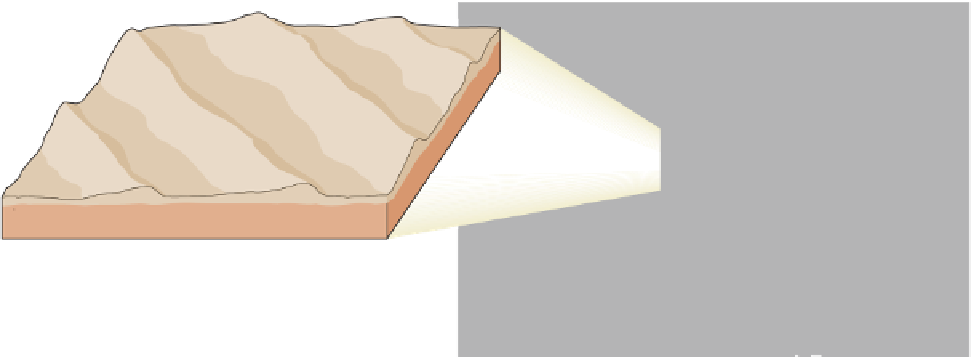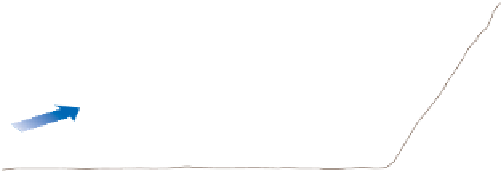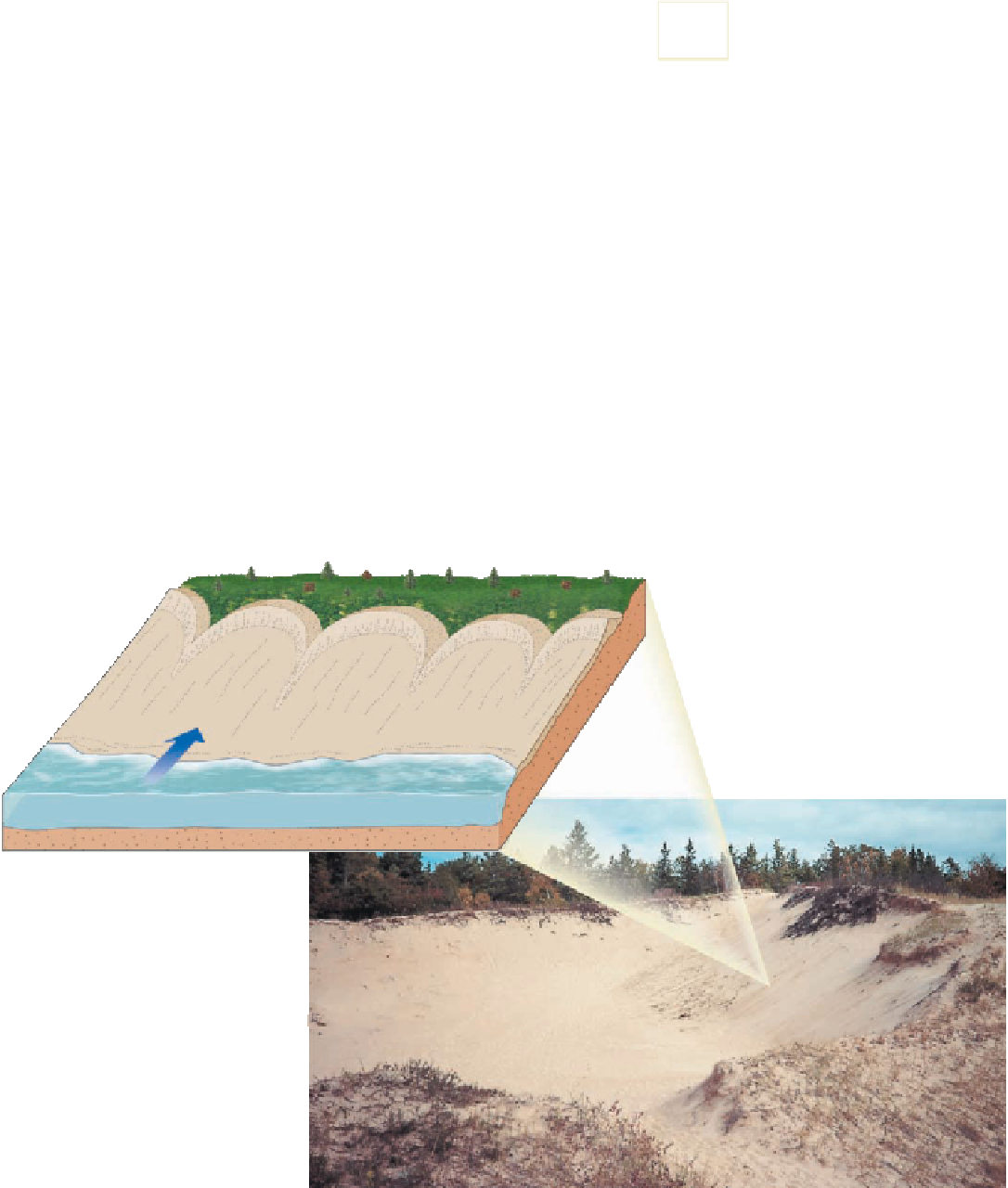Geology Reference
In-Depth Information
◗
Figure 15.12
Transverse Dunes
Wind
Image not available due to copyright restrictions
a
Transverse dunes form long ridges of sand that are
perpendicular to the prevailing wind direction in areas of little or
no vegetation and abundant sand.
receive the most solar radiation, such as the equatorial
regions, have low air pressure, whereas the colder areas, such
as the polar regions, have high air pressure.
Air fl ows from high-pressure zones to low-pressure zones.
If Earth did not rotate, winds would move in a straight line
from one zone to another. Because Earth rotates, however,
winds are defl ected to the right of their direction of motion
(clockwise) in the Northern Hemisphere and to the left of
their direction of motion (counterclockwise) in the Southern
Hemisphere. This defl ection of air between latitudinal zones
resulting from Earth's rotation is known as the
Coriolis effect
.
The combination of latitudinal pressure differences and the
◗
Figure 15.13
Parabolic Dunes
a
Parabolic dunes typically form
in coastal areas that have a partial
cover of vegetation, a strong onshore
wind, and abundant sand.
Wind
b
A parabolic dune developed along
the Lake Michigan shoreline west
of St. Ignace, Michigan.























































































































































































































































































































































































































































































































































































































































































































































































































































































































































































































































































































































Search WWH ::

Custom Search